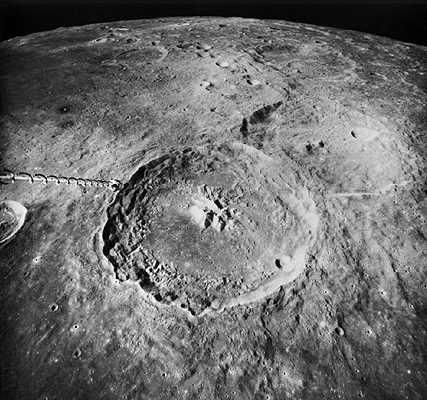Difference between revisions of "February 1, 2015"
(Created page with "__NOTOC__ =Theophilus= Originally published February 1, 2004 <table width="640" border="0" align="center" cellpadding="6" cellspacing="2"> <tr> </tr> </table> <table width="6...") |
|||
| (3 intermediate revisions by the same user not shown) | |||
| Line 31: | Line 31: | ||
[http://www.hq.nasa.gov/office/pao/History/SP-362/contents.htm Apollo Over the Moon: The View from Orbit (NASA SP-362)]<br> | [http://www.hq.nasa.gov/office/pao/History/SP-362/contents.htm Apollo Over the Moon: The View from Orbit (NASA SP-362)]<br> | ||
[http://www.lpi.usra.edu/research/lunar_orbiter/images/img/iv_077_h2.jpg Lunar Orbiter view]</p> | [http://www.lpi.usra.edu/research/lunar_orbiter/images/img/iv_077_h2.jpg Lunar Orbiter view]</p> | ||
| − | <p | + | <p><b>Yesterday's LPOD:</b> [[January 31, 2015|Hooke & Hipparchus]] </p> |
| + | <p><b>Tomorrow's LPOD:</b> [[February 2, 2015|Brightness at Noon]] </p> | ||
</td></tr> | </td></tr> | ||
</table> | </table> | ||
| Line 43: | Line 44: | ||
<p align="center" class="main_titles"><b>Author & Editor:</b><br> | <p align="center" class="main_titles"><b>Author & Editor:</b><br> | ||
[mailto:tychocrater@yahoo.com Charles A. Wood]</p> | [mailto:tychocrater@yahoo.com Charles A. Wood]</p> | ||
| − | < | + | <!-- Cleanup of credits --> |
| − | + | <!-- Cleanup of credits --> | |
| − | < | + | <!-- Cleanup of credits --> |
| − | + | <!-- Cleanup of credits --> | |
| − | < | + | <!-- Cleanup of credits --> |
| − | + | <!-- Cleanup of credits --> | |
| + | <!-- Cleanup of credits --> | ||
</tr> | </tr> | ||
</table> | </table> | ||
<p> </p> | <p> </p> | ||
| − | + | {{wiki/ArticleFooter}} | |
| − | |||
| − | |||
| − | |||
| − | |||
| − | |||
| − | |||
| − | |||
| − | |||
| − | |||
Latest revision as of 17:54, 1 February 2015
Theophilus
Originally published February 1, 2004
Image Credit: Apollo 16 (AS16-0692) |
|
Theophilus If Copernicus is the king of lunar craters, Theophilus is at least a duke, if not a prince. Theophilus is a 100 km wide, 4.4 km deep complex impact crater. This oblique Apollo 16 view clearly shows the trademark features of a complex crater: terraced walls, flat floor, and massive central peaks. Because its secondary craters and rays are less well preserved than those at Copernicus, Theophilus must be older. Don Wilhelms, a retired US Geologic Survey lunar expert, has classified Theophilus as Erastothenian in relative age - that is, somewhere between 1.1 and 3.2 billion years old. Its faint rays - can you see them at full Moon? - suggest that Theophilus is at the young end of that range. Finally, note the two dark halo craters to the middle left. These appear to be normal small impact pits that have excavated buried mare material from under the bright ejecta of Theophilus. Related Links: Yesterday's LPOD: Hooke & Hipparchus Tomorrow's LPOD: Brightness at Noon |
|
Author & Editor: |
COMMENTS?
Register, Log in, and join in the comments.




